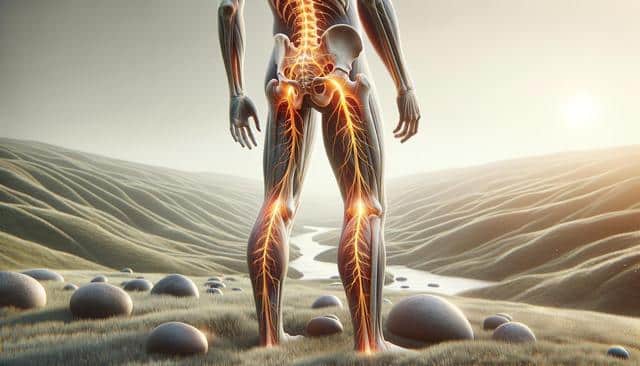Understanding Sciatica and Its Impact
Sciatica is a condition characterized by pain that radiates along the path of the sciatic nerve, which extends from the lower back through the hips and buttocks and down each leg. This pain can range from mild to severe and is often accompanied by sensations of tingling, numbness, or weakness. Understanding the causes and symptoms of sciatica is crucial for effective management. Common causes include a herniated disk, bone spur on the spine, or narrowing of the spine (spinal stenosis) that compresses part of the nerve. Sciatica symptoms can significantly impact daily routines, making even simple tasks feel daunting. To manage these symptoms effectively, a combination of lifestyle changes and targeted treatments is often recommended.
The Role of Diet in Sciatica Management
Healthy eating is a cornerstone of managing sciatica symptoms. A balanced diet can help reduce inflammation, support nerve health, and promote overall well-being. Some dietary considerations include:
- Incorporating anti-inflammatory foods such as fruits, vegetables, and whole grains.
- Limiting foods that can exacerbate inflammation, such as processed foods and sugars.
- Ensuring an adequate intake of vitamins and minerals, particularly those that support nerve function, such as B vitamins and omega-3 fatty acids.
By focusing on nutrition, individuals can support their body’s natural healing processes, potentially reducing sciatic nerve pain and enhancing sciatica treatment outcomes.
Exercise and Stretches for Sciatica Relief
Regular physical activity is essential for managing sciatica symptoms. Engaging in specific exercises and stretches can help alleviate tension and strengthen the muscles supporting the spine. Some effective sciatica stretches and exercises include:
- Hamstring stretches to relieve tension in the legs.
- Piriformis muscle stretches to reduce pressure on the sciatic nerve.
- Low-impact aerobic exercises such as walking or swimming to improve overall fitness without straining the back.
Incorporating these exercises into a daily routine can provide significant sciatic nerve pain relief and prevent further aggravation of the condition.
Preventing Sciatica Flare-Ups
Preventing sciatica involves making lifestyle changes that minimize pressure on the sciatic nerve and maintain spinal health. Some preventive measures include:
- Maintaining proper posture when sitting, standing, and sleeping.
- Using ergonomic furniture and supportive shoes.
- Taking regular breaks from sitting or standing for extended periods.
By adopting these habits, individuals can reduce the risk of developing sciatica symptoms and promote long-term spinal health.
Exploring Treatment Options for Sciatica
While lifestyle changes can significantly impact sciatica management, sometimes additional treatments may be necessary. Common sciatica treatment options include physical therapy, medications, and in some cases, surgical interventions. Physical therapy focuses on strengthening and stretching exercises tailored to the individual’s needs. Medications may include anti-inflammatory drugs or muscle relaxants prescribed by a healthcare professional. In severe cases, surgery may be considered to relieve pressure on the sciatic nerve. Consulting with a healthcare provider can help determine the most appropriate treatment plan for achieving sciatic nerve pain relief.
Conclusion
Living with sciatica can be challenging, but by adopting a proactive approach, individuals can manage symptoms effectively. Through a combination of healthy eating, regular exercise, and preventive measures, it is possible to alleviate sciatic nerve pain and improve quality of life. Exploring treatment options in consultation with healthcare providers ensures personalized care, helping individuals regain control and comfort in their daily activities.
